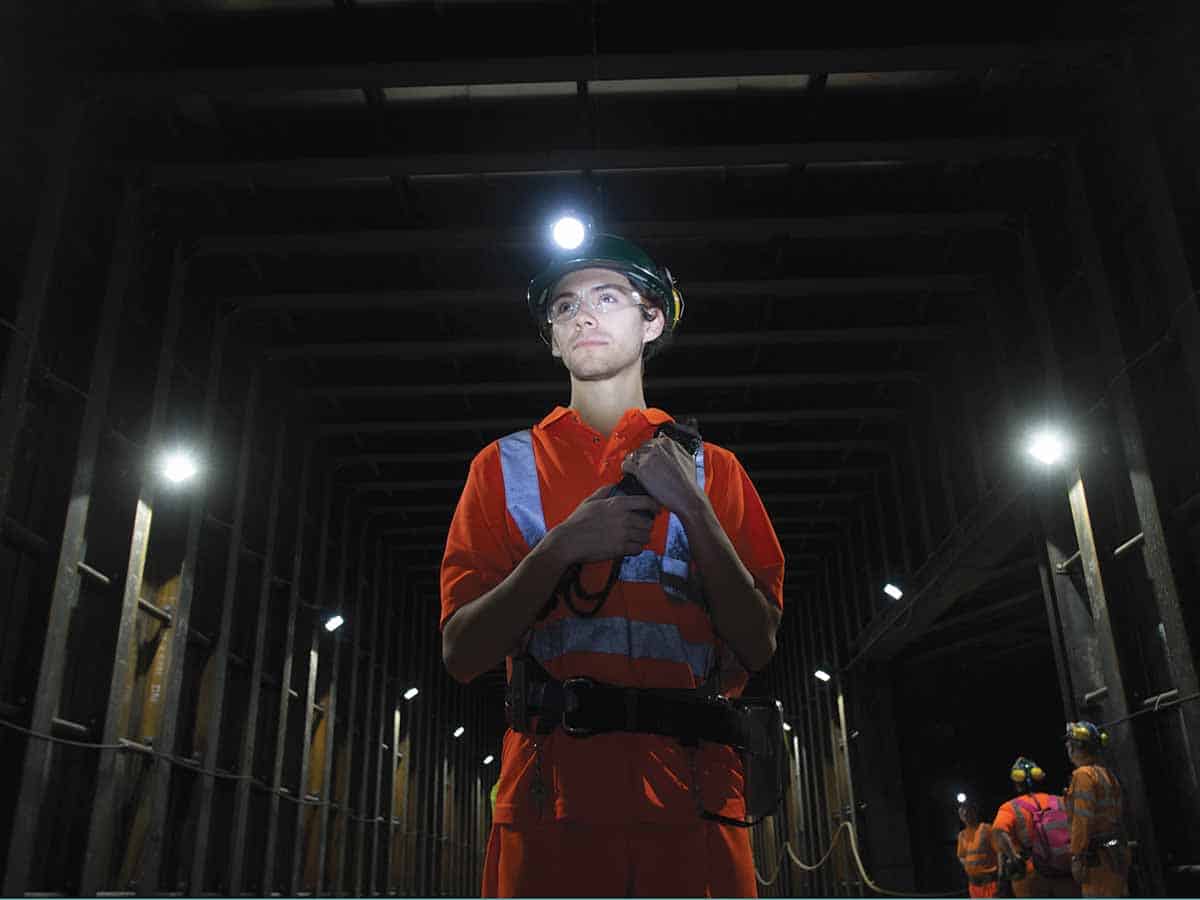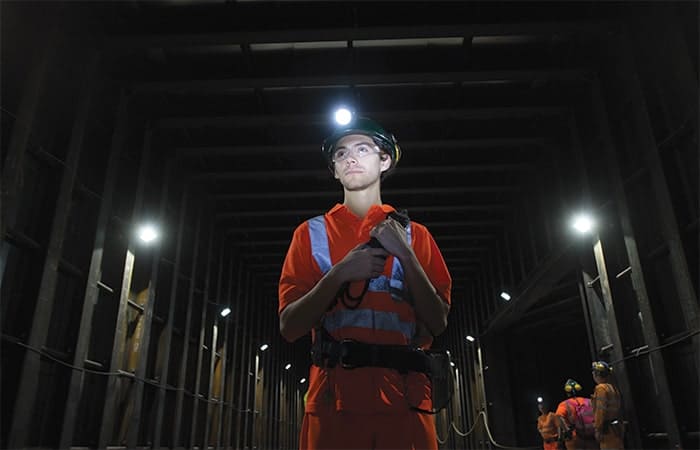This story is part of Covering Climate Now, a global collaboration of more than 250 news outlets to strengthen coverage of the climate story.
Iain Dale-Trotter reviews Underland: a Deep Time Journey by Robert Macfarlane

In his exploration of the world beneath our feet, author Robert Macfarlane weaves together cutting-edge science and thousands of years of our history into an emotive portrait of how humanity affects – and it affected by – the lowest places it has ever reached. In his latest book Underland: a Deep Time Journey, the seed around which the rest of the narrative clusters is the concept of the Anthropocene – the proposed name for the current geologic epoch, defined by humanity’s significant impact on Earth’s ecosystems. It is the ghost that haunts Macfarlane throughout all of the travels that make up this book, and ultimately motivates his central question: “Are we being good ancestors?”.
Early on, Macfarlane states that “Underland is a story of journeys into darkness, and of descents made in search of knowledge.” Two subterranean landscapes intrinsically linked to physics bookend this story, which “moves over its course from the dark matter formed at the universe’s birth to the nuclear futures of an Anthropocene-to-come”.
The first of these two sites is what Macfarlane introduces as a cosmic “breath-catcher” – the large silver cube better known as the DRIFT (Directional Recoil Identification from Tracks) experiment deep under the Yorkshire coast at Boulby. It is one of the many global detectors hoping to catch a glimpse of the dark matter that is thought to make up 85% of the mass in the universe, but which is yet to be detected. Macfarlane’s description of our attempts to balance the books is some of the most beautifully poetic writing about the search for dark matter I’ve come across, such as the great challenge of “how to weave such a net that might catch these quick fish”.

Going underground – life inside the Boulby lab
Perhaps unsurprisingly, when discussing such ethereal particles, Macfarlane asks if this search requires something like an act of faith – a question he asked his physicist guide Chris Toth at the Boulby lab. The response, and their surprising quixotic discussion of how knowledge can lead to wonder, will resonate with many readers’ personal sense of awe at the cosmos.
A particularly affecting passage in the book is set in the “Hollow Land” of the Karst plateau, extending across the border between Italy and Slovenia. Here, Macfarlane meditates on the scars left on subterranean spaces during times of war, and the trauma inflicted on people in underground spaces. In this region, with its long and painful history of sectarian violence, the local word for sinkhole, foiba, is now synonymous with the killings that took place at these sites during and after the Second World War.
Throughout the book, Macfarlane underlines the importance of the idea of the underworld over much of human culture and mythology, and classical tales of Orpheus and Aeneas are used to illustrate man’s obsession with “katabasis” – a descent to the underworld.
In the final third of the book, classical mythology gives way to other folk traditions. Indeed, it is his reading of Kalevala, the 19th-century collection of Finnish epic poetry, that brings us to the second physics-heavy landscape, at the other end of the world. Macfarlane characterizes this folk epic, akin to the Iliad or Odyssey, as being “fascinated by the underland; by the safe storage of dangerous materials” – an eerily apt allegory for his final destination, the Onkalo nuclear waste repository on Olkiluoto Island in western Finland.
The culmination of Underland’s Anthropocene narrative – which has its twin peaks in Macfarlane’s expeditions to the Knud Rasmussen Glacier in Greenland and at Onkalo – highlights two of the human era’s most chilling consequences and gives us a view down both ends of the deep-time telescope. We can now witness, in “real time”, changes that we have effected on systems that are used to working on geological time scales. We have also now ensured that our legacy will live on, long after our cities and cultures have disappeared, but that this legacy will be mausoleums of radioactive waste – designed to remain impenetrable for tens of thousands of years.
The dense layers of meaning in Underland extend to its attention-grabbing cover too; the latest of several collaborations between Macfarlane and Stanley Donwood, best known as Radiohead’s artist-in-residence. Taken from Nether, a 2013 addition to Donwood’s “Holloway” series, the cover shares an eerily symbiotic relationship with the book it encloses. Macfarlane recalls being immediately taken with the artwork’s mesmerizing Technicolour tunnel of tangled branches – leading to a saturated yellow opening – and keeping it in mind as a sort of graphic talisman when working on the book over the following five years. Intriguingly, the causal relationship turns out to be even more muddled, as Donwood subsequently revealed that the bright centre of the piece “isn’t the Sun. It’s the last thing you’d ever see. It’s the light of a nuclear blast that has just detonated.” Whether or not this revelation came before or after Macfarlane’s trip to Onkalo, it adds yet another level to a story already dense with influences and references.
Macfarlane roots every space with humanity – vivid portraits of friends and acquaintances, sketches of historical or imagined figures from the vast stretches of human history
Underland –which in August won the 2019 Wainwright Book Prize for nature writing – is also psychedelic with characters, and this is as much a story of the people whom Macfarlane shares his adventures with, as it is of the places they take him. This is one of the real triumphs of Macfarlane’s writing. Although his descriptions of place are as evocative as any other nature writing I have read, his success comes from rooting every space with humanity – whether vivid portraits of the authors’ friends and acquaintances, or sketches of historical or imagined figures from the vast stretches of human history the book covers.

Subterranean science
Underland has shared a place in time with a summer of climate action protests. Irrespective of your take on this, readers should not worry about the tone of Macfarlane’s advocacy. Although it certainly doesn’t pull any punches, he is never preachy or prescriptive – rather choosing to observe and faithfully report what he has seen, giving the reader time to reflect and come to their own conclusions. Macfarlane does include a call to action for all those reading the book. He hopes that the appreciation of the concept of deep time that the subterranean world affords us should not leave us feeling insignificant – rather it should provide a “radical perspective, provoking us to action not apathy”.
“At its best,” he writes, “a deep time awareness might help us see ourselves as part of a web of gift, inheritance and legacy stretching over millions of years past and millions to come, bringing us to consider what we are leaving behind for the epochs and beings that will follow us.” A challenge to all of us, to be better ancestors.
- Hamish Hamilton, Penguin Books 496pp £20hb



